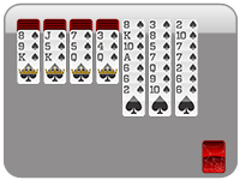4 Suit Spider Solitaire Strategy: Tips for Winning
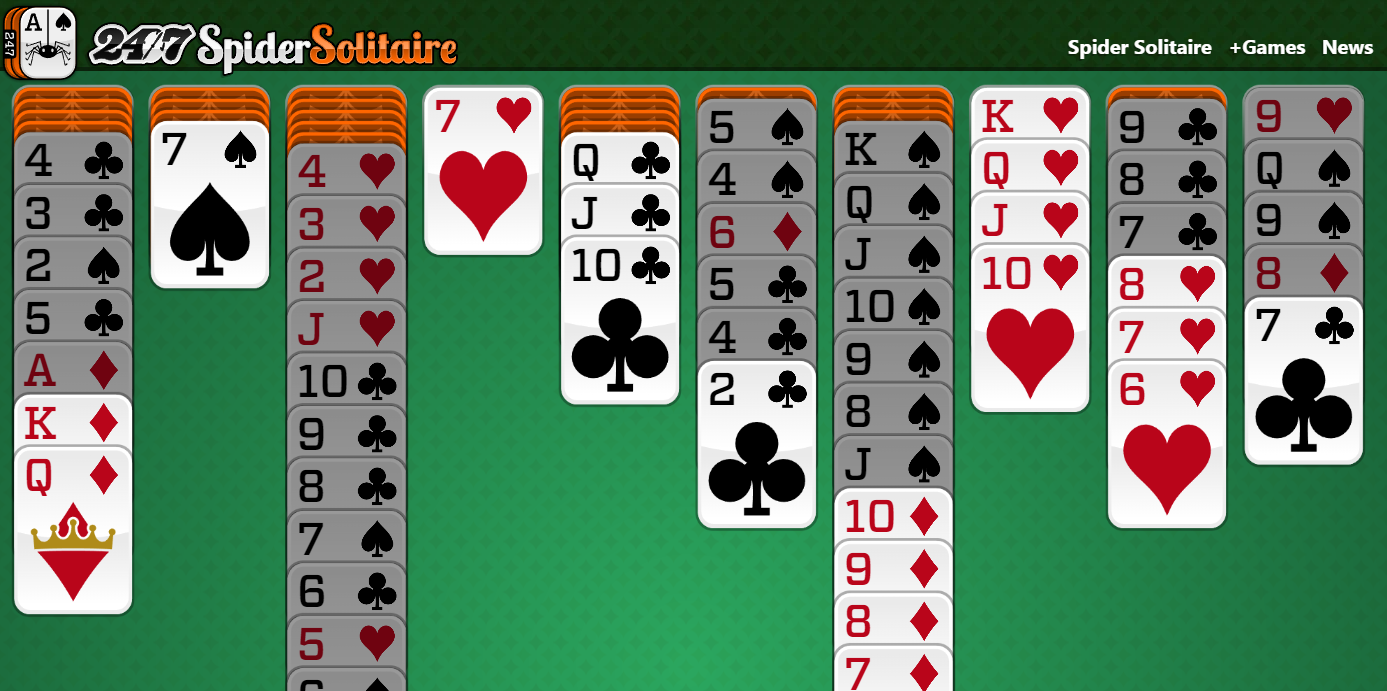
Four-suit Spider Solitaire is a notoriously challenging game. The goal is to file cards from the tableau into sequenced suits running from King to Ace in descending rank order by following special rules. However, achieving this feat requires cunning, strategy, and luck.
Fortunately, this guide is here to help. It explains various strategies you should adopt and provides numerous tips for winning, even if all hope seems lost!
Understanding the Basics
Four-suit spider solitaire uses two decks of French playing cards for a total of eight suits. You start the game by creating the tableau – a line of ten card piles. The first four have six cards, and the final six have five. The remaining cards go into the stock, a pile of leftovers.
You start the game by turning over the top cards on each pile. Then, you have several options:
- Add an upturned card to a card of the same suit of the next rank (i.e. add a two of hearts to a pile topped by the 3 of hearts)
- Add an upturned card to any card of the next rank (i.e. add the two of hearts to a pile containing the three of diamonds)
- Deal ten new cards from the stock, one for each tableau
The goal of Spider Solitaire is to create suit sequences of cards in descending rank order: King, Queen, Jack, 10, 9, 8, 7, 6, 5, 4, 3, 2, 1, and Ace on a pile. Once you have a set, you can eliminate it from the tableau, clearing the table for more sequences later.
You can create non-suit sequences of descending rank order (i.e. King of Spades, Queen of Spades, Jack of Spades followed by 10, 9, 8, 7, 6, 5, 4, 3, 2, 1 of diamonds). However, you must eventually arrange them into a complete suit before removing them from the tableau.
When you remove an up-facing card from one pile and place it on another, you reveal the card below. Turning it over lets you create longer descending rank suit sequences, and so on.
If you can’t place any cards on top of any other in the tableau, you can deal from the stock. However, this deal is random, meaning you could get any card on top of your existing piles (even if they don’t follow descending rank order).
Spider Solitaire: Tactical Moves
These rules make 4-suit Spider Solitaire highly challenging. Winning is rare because of the strict rules about where you can place cards.
Fortunately, several tactics increase your odds of victory, helping you create suits and avoid missed opportunities.
Prioritize Same-Suit Sequences
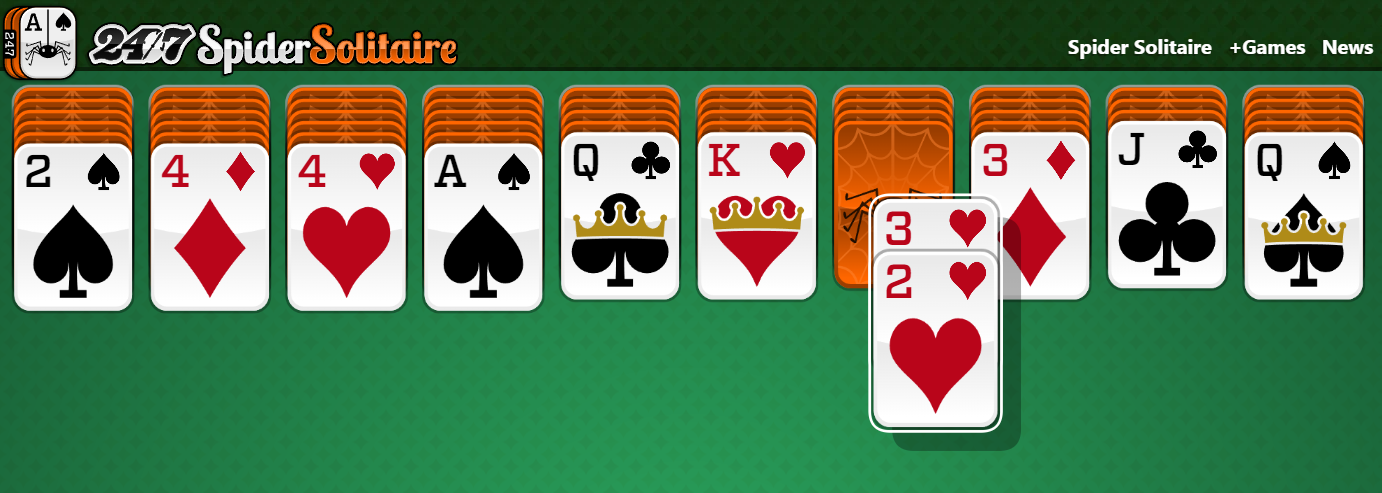
The first tactic is to prioritize the construction of same-suit sequences. These allow you to complete winning sets and create blocks of cards you can move at once (helping you reveal more face-down cards in tableau piles).
This example shows what the tactic looks like in practice. You can move the 2 and 3 of hearts together and place them on another pile. (i.e. the 4 of hearts). Then, you can reveal a new card below, in this case, the King of Spades.

Expose Hidden Cards In The Tableau Whenever Possible
You also want to expose hidden cards in the tableau whenever possible. This tactic helps you eventually open up a space which gives you more options.
Drawing from the stock is another possibility. However, doing so can block you from creating suits and leave you in an even worse situation.
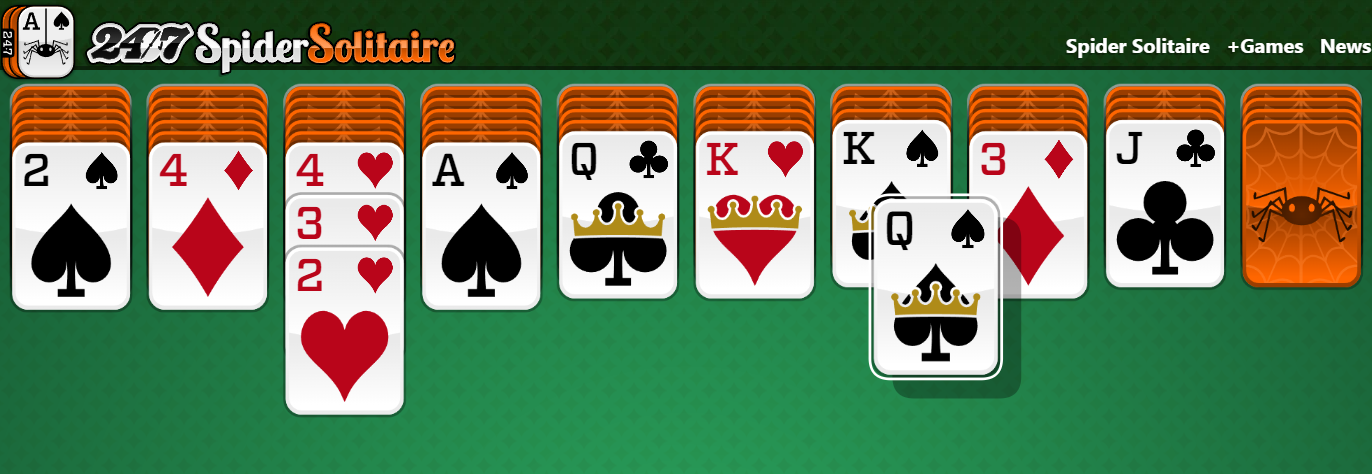
This example shows what happens when we move the Queen of Spades onto the King of Spades revealed in the last round. This tactic matches the suit and reveals a new card, providing more options, as shown below:
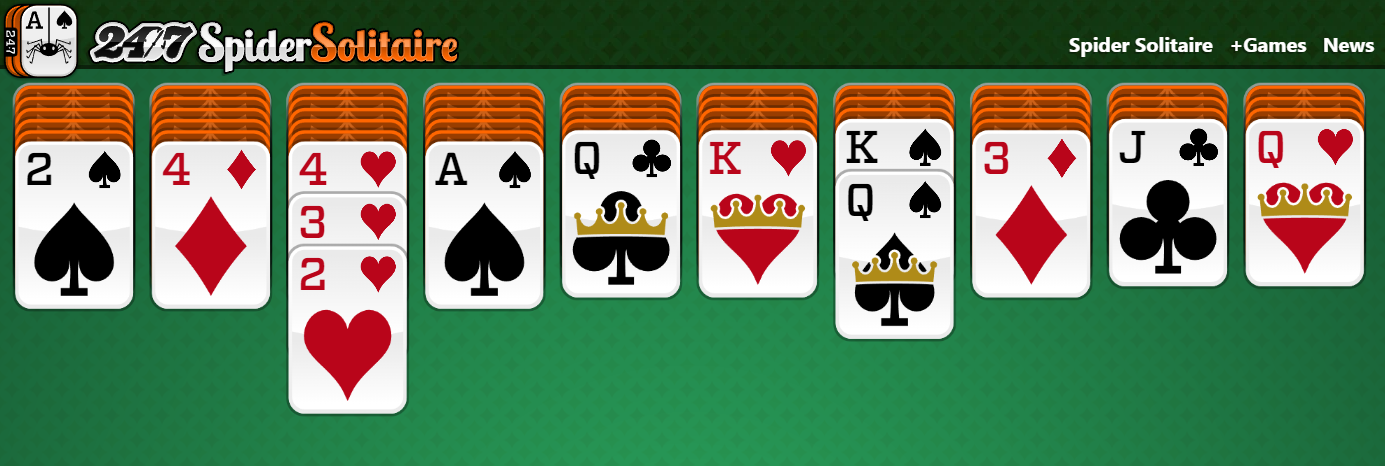
Make Empty Piles Early
Ideally, you want to make empty piles as soon as possible to give you more options later.
The continuation of the above game shows this concept in action. The final pile in the tableau now only has the 9 of hearts in it. Removing this card would create a space for any other card or sequence of cards in the same suit, adding to your options.
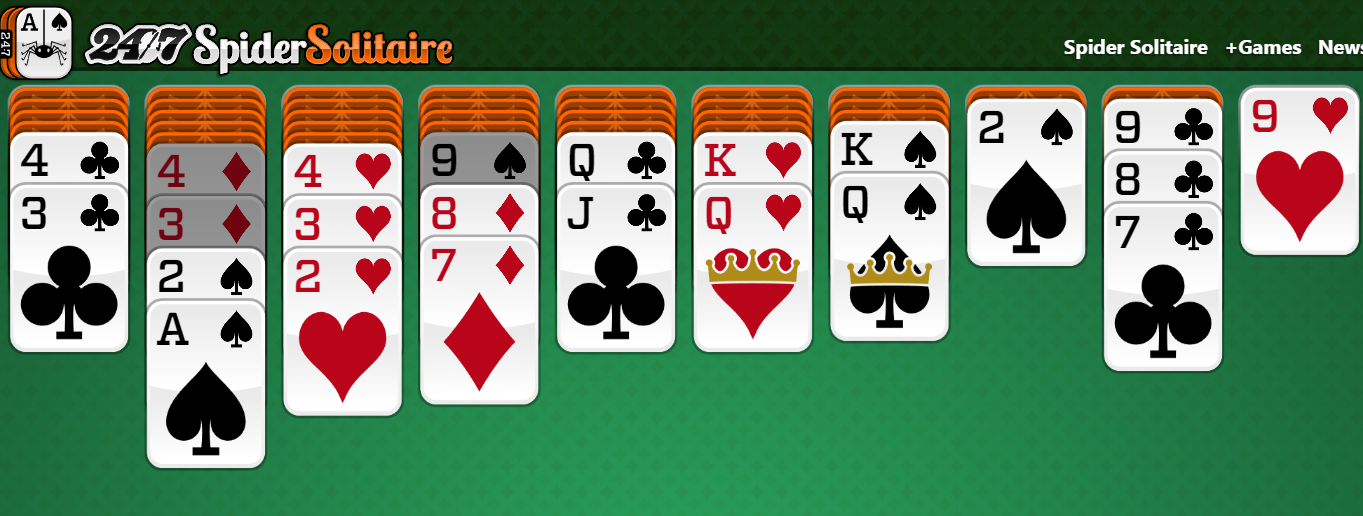
Creating empty spaces is one of the most challenging aspects of the game but it gives you more options to rearrange cards into suits. If you don’t have this extra space, you don’t have room to rearrange, forcing you to deal from the stock.
Focus On Building With Higher Value Cards
Another pro tip is to build on higher-value cards first, ideally starting with kings and working your way down, (as in the example above). Setting up three or four of these makes it more straightforward to add cards in sequence later.
If you need to build “out of suit,” start with the highest rank. Going lower will mean you end up with an ace fast and have less chance of placing it anywhere.
Arrange Cards Into Suits As Much As Possible Before Dealing
Related to the first tactic of matching suits, try to exhaust as many possibilities as you can before dealing. As discussed, adding cards from the stock can create a mess and the game can wind up looking unwinnable.
The following example shows what happens when you keep dealing and neglect to create sequences of cards, even if you have a reasonable hand. Eventually, you end up with a difficult situation where you can’t free up cards to win.
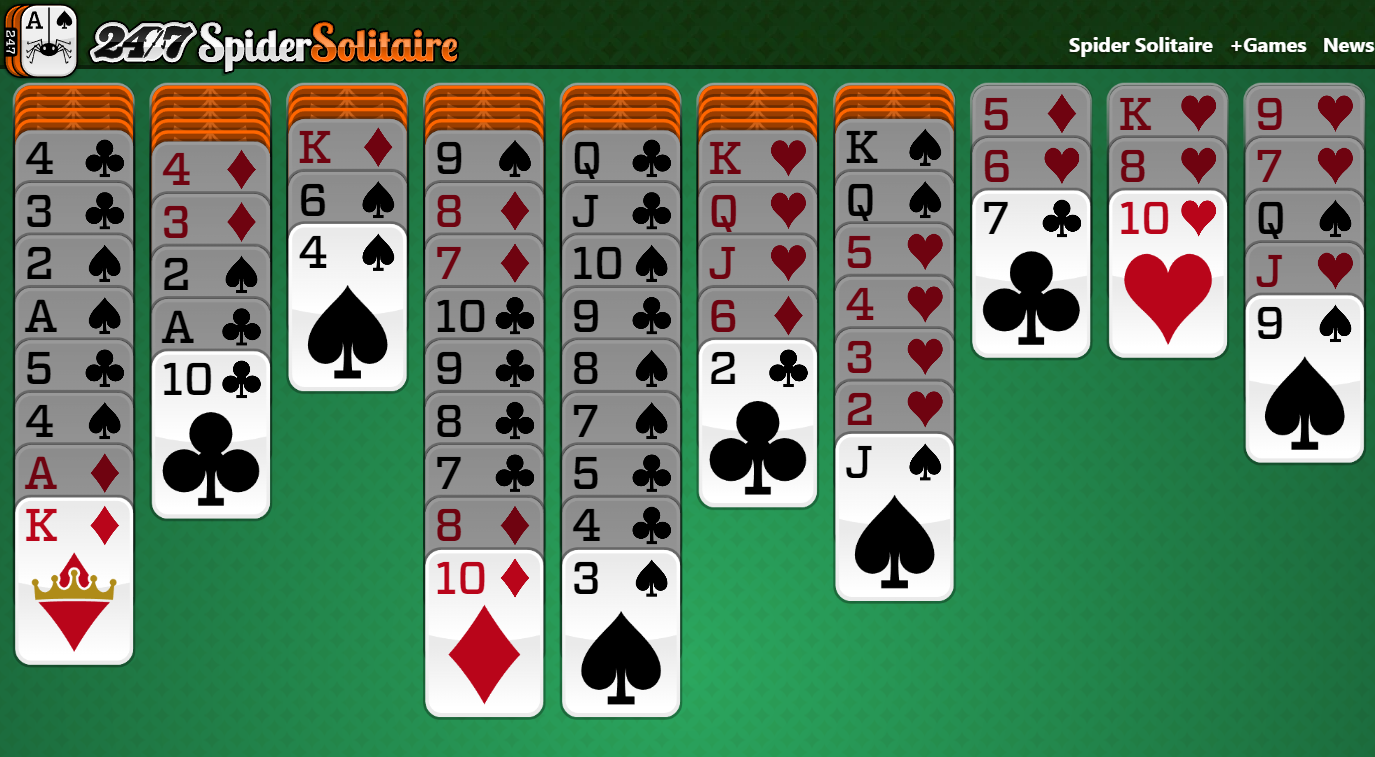
Advanced Strategies to Win
As you play the game and explore further, you will notice patterns and strategies you can use to increase your chances. These rely on taking a more systematic approach to the game and holding back from making obvious moves if a better one is available.
Focus On Creating Suits Available In Your Tableau
One advanced approach is to weigh probabilities and focus on creating suits that seem more present in your tableau. For example, if you have five hearts and three diamonds out of ten upturned cards, it makes more sense to concentrate on these instead of aiming to build other sets. Using additional piles as places to store cards can be effective, as long as you don’t bury the next rank you need to complete the suit.
Identify The Most Promising Sequences
Another advanced strategy is to avoid trying to uncover the next card at all costs and instead consider which sequence of moves is most likely to create a suit. If you already have a chain of three or four cards, that’s a sign you want to focus more on uncovering new cards to form the next part of that sequence. Adding aces to the bottom of it can reduce the risk of getting stuck and having to draw.
Once you complete a sequence, move the block to another foundation and look for opportunities to build from there. Combining this strategy with empty spaces can increase its effectiveness further, allowing you to uncover more cards.
Use An Efficiency-First Method
Some players also adopt an efficiency-first method. This approach looks beyond the next move and assesses the likely impact on the tableau as a whole.
Sometimes, players will add cards to piles, just because there is an opportunity to do so. However, this method isn’t always the best long-term choice because of how it affects future options. Players can sometimes find their choices restricted when simply pursuing the most obvious sequence.
Use Undo
The final pro tip is to use the undo button on online versions of the Spider solitaire game. These let you take a step back to evaluate different choices. Some decisions will be dead ends, but others will get you closer to forming suits.
Managing Multi-Suit Stacks
Multi-suit stacks are challenging to manage because you can’t move cards underneath the top sequence. Therefore, even if there is space for chains elsewhere on the tableau, you can’t access it until you move the cards on top.
This problem gets even worse when you have single cards in the stack. These require you to deconstruct them one at a time, and the tableau may never present opportunities to do so.
To manage multi-suit stacks:
- Use mixed stacks to free cards temporarily to complete suits
- Use empty columns to disaggregate multi-suit piles
- Aim to break down multi-suit stacks whenever the opportunity arises
- Stagger the reduction in the size of the multi-suit stack
Mistakes to Avoid
Finally, here are some mistakes to avoid in 4-suit Spider Solitaire:
- Drawing from the deck immediately instead of creating empty piles first
- Ignoring the hidden cards in the tableau and focusing only on drawing from the stock
- Forgetting to undo poor moves that create problems later
- Using empty columns for kings too early when you need space for constructing more mid-chain sequence sections
- Building multi-suit stacks early without undoing actions within one or two moves
So there you have it: our tips for winning 4-suit Spider Solitaire. It’s challenging, but also addictive and extremely rewarding once you get the hang of it.
Spider Solitaire Games
More Solitaire Games
More Games
Spider Solitaire News
Disclaimer
DISCLAIMER: The games on this website are using PLAY (fake) money. No payouts will be awarded, there are no "winnings", as all games represented by 247 Games LLC are free to play. Play strictly for fun.







